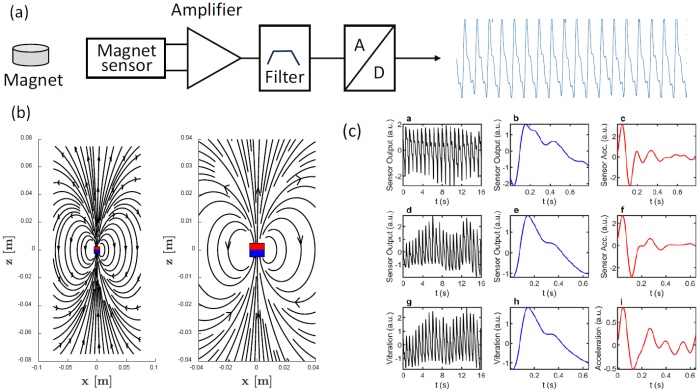Speaker
Description
Continuous non-invasive monitoring of vital signs, such as heart rate and blood pressure, is essential for preventive care and managing chronic conditions. Techniques like photoplethysmography (PPG) and electrocardiogram are widely used to extract these signals, but they have limitations in terms of working conditions due to the requirement of good skin contact.To address the limitations of existing techniques, we have developed a pulse detection device based on a magnetic sensor which can be applied to various conditions that cannot be accessed by PPG [1]. The device in its simplest form comprises only a small magnet and a magnetic sensor (Fig.1a), which can be attached to either fingertips or wrist. When blood flows the magnetic field surrounding the magnet changes subtly (Fig.1b), which can be detected by the nearby magnetic sensor. Through a series of experiments and simulations, we validated that the detected signals stem from the vibration of the magnet induced by blood flow, dismissing the previously suggested mechanism linked to alterations in the magnetic properties of blood under varying oxygenation states [2]. The correlation between the magnetic and vibration signal is in the range of 95-99$\%$ (Fig.1c). The device could be used in conditions which are challenging for existing pulse detectors and might also have its application extended to blood pressure measurement.

Fig. 1 a) Schematic diagram of the pulse detection device based on magentic sensors; (b) calculated magentic field surrounding an N52 magnet with a diameter of 1cm and thickness of 5 mm; (c) upper and middle panels: detected magnetic signals, lower panel: detected vibration signal (same subject as the middle panel).
References
[1] H. Shen, X. Gu, and Y. Wu, “A fingertip-type magnetic pulse detection device for unusual monitoring conditions,” Communications Engineering, vol. 2, no. 1. Springer Science and Business Media LLC, Jul. 28, 2023. doi: 10.1038/s44172-023-00102-2.
[2] C. T. Phua, G. Lissorgues, and B. Mercier, “Non-invasive Acquisition of Blood Pulse Using Magnetic Disturbance Technique,” IFMBE Proceedings. Springer Berlin Heidelberg, pp. 786–789, 2009. doi: 10.1007/978-3-540-92841-6_193.

